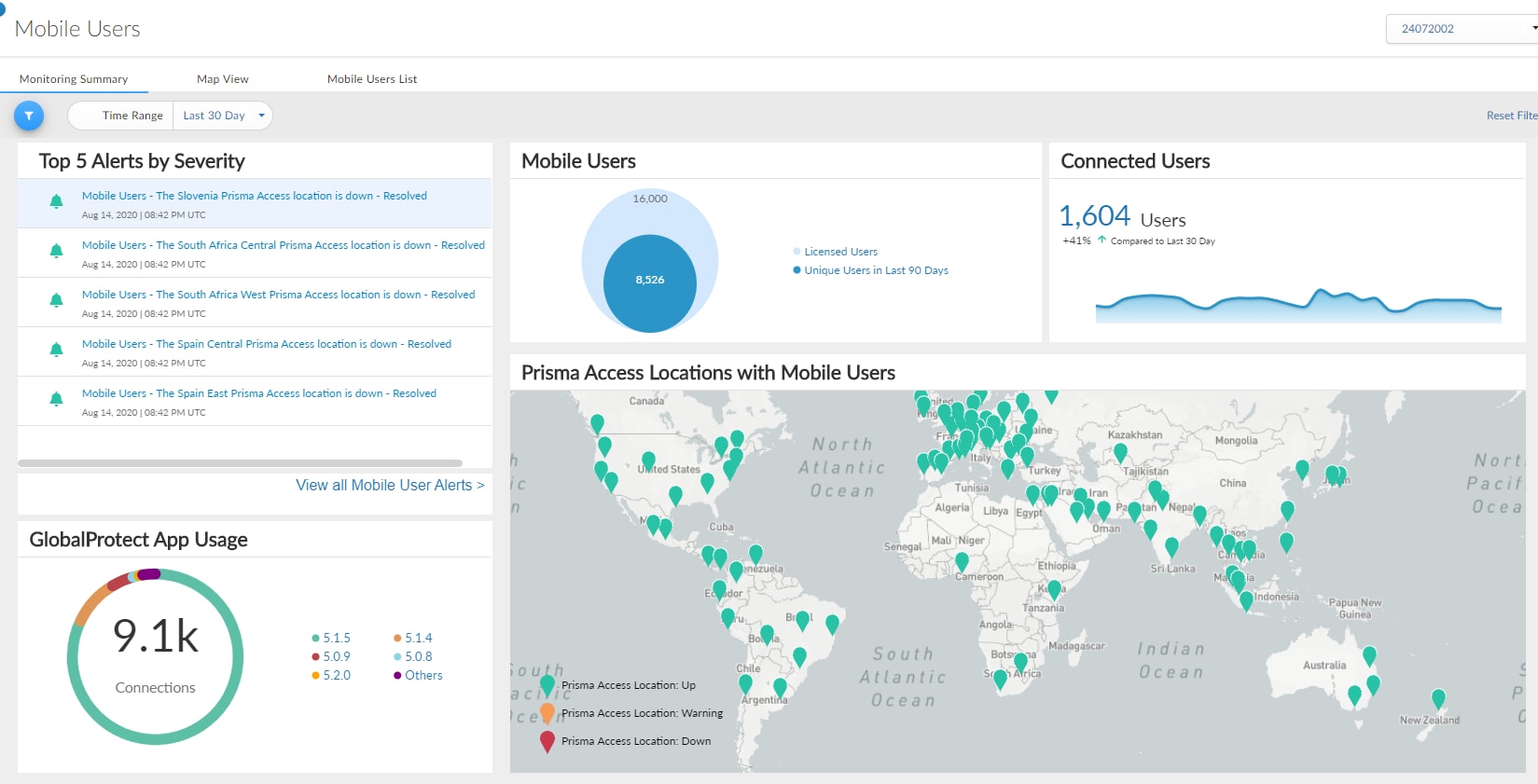We know it’s more important than ever for organizations to keep remote users and branch offices secure, and we have an ongoing commitment to improving the tools our customers have available to take care of employees, students or customers – wherever they are. This is why we’ve built Prisma Access Insights, a comprehensive service monitoring tool that provides additional visibility, proactive assistance and capacity planning for Prisma Access customers. Launching today as a public beta, Prisma Access Insights offers network and security administrators an even better experience to visually analyze the health and efficiency of their Prisma Access deployment with intuitive new dashboards and predictive analytics.
Prisma Access is the Palo Alto Networks Secure Access Service Edge (SASE) solution, part of an approach to supporting remote workers and branch offices that converges networking and security capabilities as a cloud-delivered service. It’s built from the ground up as a cloud-native service to enable secure remote users, with advanced security services and consistent networking in a single platform.
With a robust SASE solution, administrators gain the ability to implement security controls down to the end-user device, network or application level, no matter where users or applications are located.
The problem with many SASE solutions, however, is they lack the necessary visibility and monitoring needed for capacity planning and to effectively troubleshoot problems when they occur. SASE solutions should be able to provide visibility and proactive assistance. A key differentiator is the ability to provide capacity planning that is at the intersection of artificial intelligence for IT operations (AIOPS), application performance management (APM) and network performance management (NPM). These tools are necessary to eliminate the burden on operations teams and to deliver a comprehensive SASE solution.
The Benefits of Prisma Access Insights
- Advanced Visibility and Monitoring – Administrators can view maps with detailed information on the deployment status of their remote networks, mobile users and service connections. Prisma Access Insights also shows network utilization statistics to measure bandwidth usage and user connectivity to determine trends and current connections, allowing deep-dive analysis of app and user activity.
- Artificial Intelligence and Machine-Learning Based Monitoring – IT organizations can make better and faster decisions with their Prisma Access deployment by leveraging real-time monitoring and recommended actions based on statistical anomalies, machine-learning and predictive analysis. Alerting is essential to stopping threats, but too many alerts can have an unintentional opposite effect and lead to alerts – and potentially threats – being ignored. With Prisma Access Insights, administrators can further drill down into detailed infrastructure information for critical alerts.
- Capacity Planning – IT organizations benefit from having information on current and upcoming consumption trends, both for remote networks and mobile user deployment. Prisma Access Insights helps visualize consumption trends and enables predictive analytics to help customers plan for the future.
Administrators can benefit from this new app by getting their questions answered in one location. Some common questions include:
- What’s the overall health of my Prisma Access deployment?
- How many active users are currently connected? What is the health of their connections?
- How do I easily detect anomalies in my network with realtime and historical visualizations?
- Is my deployment impacted by the service level alerts? What do I need to fix (if anything)?
- What’s the health of my remote networks/service connections and their connections?
For more information, read the Prisma Access Insights At a Glance document.
The post Prisma Access Insights: Redefining SASE Visibility and Monitoring appeared first on Palo Alto Networks Blog.
Article Link: http://feedproxy.google.com/~r/PaloAltoNetworks/~3/uuzT7TQ-ODo/
